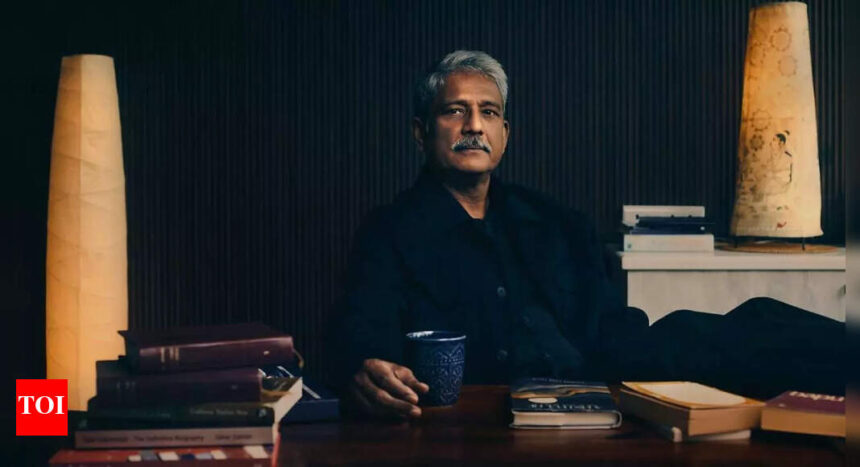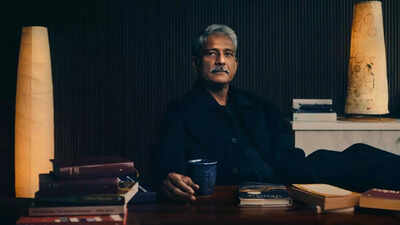- Preparing the mind: learning from legends
- The Indian context: growing up with inhibition
- The importance of choreography and direction
- Trust: the invisible backbone of intimacy
- Contracts, safety, and intimacy coordinators
- Shaking it off: how to leave the scene behind
- Lessons for young actors
- Intimacy on OTT: a new wave, but with challenges
- The sacredness of art
- Closing thoughts
The versatile and introspective Adil Hussain has always approached acting as more than just a career—it’s his spiritual practice, a path of self-discovery. When it comes to bold and intimate scenes, often considered one of the most delicate aspects of performance in Indian cinema, Hussain brings a unique combination of honesty, clinical precision, and deep respect for the craft. In this special masterclass with ETimes, the critically acclaimed actor opens up about his process, the inhibitions Indian actors face, the role of trust, and how dignity can be preserved even in the most vulnerable of on-screen moments.
Preparing the mind: learning from legends
For Hussain, the first step is not to dive into the scene but to seek wisdom from those who’ve been there before.“In my case, I asked a friend of mine who worked with Denzel Washington in very intimate scenes. She told me that Denzel approaches them clinically—like a fight sequence or an action scene. Every movement is rehearsed, every beat is executed with precision. That perspective was very helpful.”This clinical approach—removing unnecessary mystery from intimacy—helped Hussain reframe the process. Just like throwing a punch on screen requires choreography, intimacy too becomes a sequence of rehearsed actions, carried out with discipline and craft.
The Indian context: growing up with inhibition
But Bollywood isn’t Hollywood, and Hussain points out that cultural baggage plays a big role.“Most of us in India come from lower middle-class families where you can’t even utter the word ‘sex’ in front of your parents. The inhibition is huge. Sometimes, when actors try to get past it, they end up overdoing things—pretending to be overconfident, which is actually rooted in fear.”For him, the challenge wasn’t just about technical execution. It was about dismantling personal and cultural barriers, and then approaching the scene with honesty rather than bravado.
The importance of choreography and direction

Hussain recalls his experience shooting Parched with Radhika Apte under director Leena Yadav.“We had a choreographer, Ashley Lobo. Every single movement—from standing to lying down—was planned. But we executed it as if it was spontaneous. That preparation freed us as actors.”Here, rehearsal wasn’t just about learning the steps. It was also about building familiarity and comfort, so that when the camera rolled, neither actor felt hesitant.
Trust: the invisible backbone of intimacy
If there’s one word Hussain returns to again and again, it is trust.“The most important thing is building trust between co-actors. I constantly asked my co-actor, ‘Are you okay? Am I crossing a line?’ Her assurance made all the difference. Without trust, the scene turns ugly, forced, and even cheesy. With trust, it can become aesthetically beautiful.”Trust extends beyond the co-actor. Hussain emphasizes that the director must foster an environment of honesty and safety. In his case, both his wife and his co-actor’s husband were supportive, which removed an additional layer of anxiety.
Contracts, safety, and intimacy coordinators
Hussain admits he hasn’t always had the protection that younger actors now increasingly rely on.“In my Italian film Gangor (2009), there was no intimacy director, no safety net. I was very shy, and the director was screaming at me to get it done. My co-actor was fine, but I struggled.”Things were different with Parched:“There was no written contract, but there was choreography, guidance, and open conversations. That helped enormously.”He has heard that in today’s Bollywood, especially in OTT-driven projects, intimacy coordinators are sometimes employed. While not universal, the practice is slowly gaining ground.
Shaking it off: how to leave the scene behind
One of the biggest concerns young actors have is whether such scenes leave an emotional residue. Hussain says the key lies in self-awareness and release.“The best way is to shake it off, breathe it out, and recognize any emotional residue instead of ignoring it. Personally, intimate scenes never lingered on me—I would just laugh it off with my co-actors. That lightness helps.”
Lessons for young actors
What advice does he give to students and newcomers?“Every actor has different psychological make-up. But you must look at your inhibitions head-on. Work with a teacher who can help you see intimacy with grace—not shame. Treat it clinically, like a fight scene. It is no different.”He contrasts the Indian hesitation with his experience teaching in Amsterdam:“When I asked students to improvise, they would immediately take off their clothes and start an intimate act. I had to tell them to slow down! In India, it’s the opposite—we shy away from even talking about it. Both extremes exist. The balance is in approaching it as human behavior, not as taboo.”
Intimacy on OTT: a new wave, but with challenges
With streaming platforms, Indian audiences are exposed to far more intimacy than before. But Hussain believes openness is still evolving.“I haven’t watched many recent intimate scenes on OTT. Things have changed for sure, but we are still dealing with a lot of inhibition. Slowly, conversations are opening up.”
The sacredness of art
What makes Hussain’s perspective stand out is his almost spiritual view of acting.“Acting for me is sacred. It’s a vehicle for self-discovery, for expressing the human condition. That’s why intent matters. Why are you doing this scene? If it’s only for money, it will show. If it’s for art, for the story, you will approach it with grace and aesthetics.”For him, the question isn’t whether a scene is bold, but whether it is truthful.
Closing thoughts
Adil Hussain leaves us with a reminder: intimacy on screen isn’t about titillation, it’s about storytelling. With preparation, choreography, trust, and the right intent, bold scenes can become powerful expressions of human vulnerability rather than sensational spectacle.“Art, for me, is about expressing the human condition with respect and gratitude. Intimacy is just one part of that spectrum—no different from anger, violence, or tenderness. The key is to approach it with honesty and dignity.”












